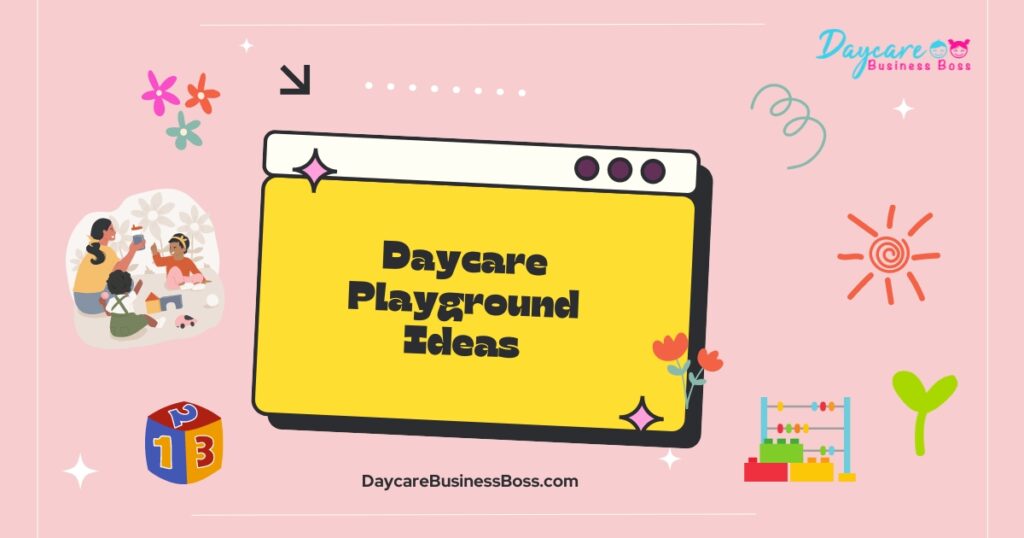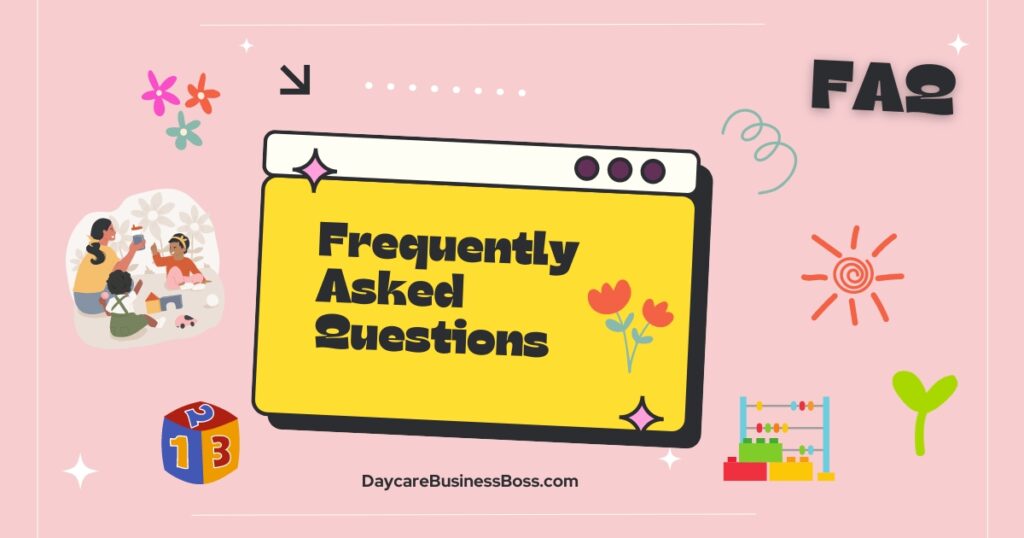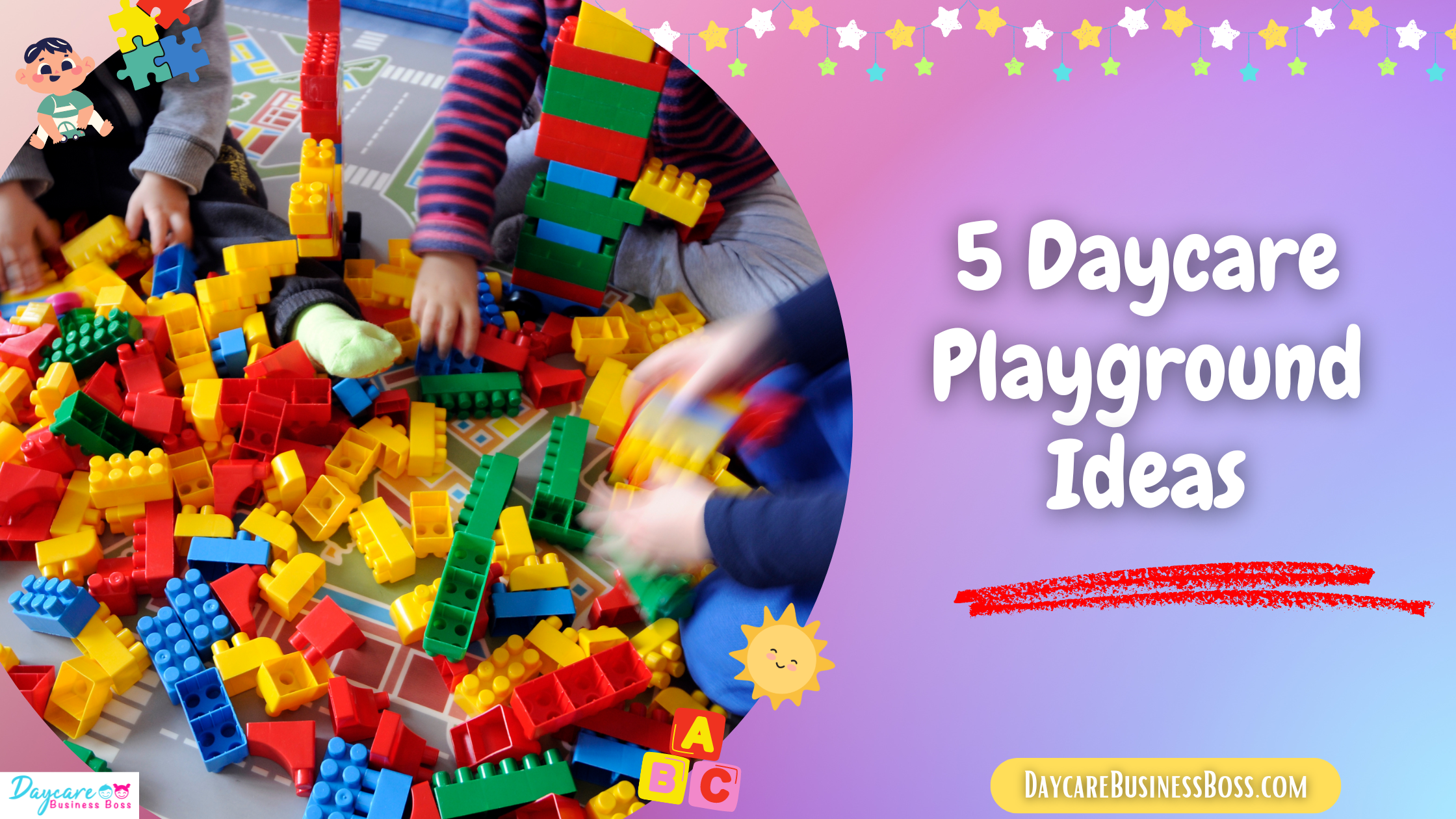Whether you’re working with babies, toddlers, or school age children, you need to provide the best outdoor playground set up that you can, not only to promote fun at your center, but also to enrich your children and help with their growth. But what can you do to foster that, and what kind of items should you have in your playground?
5 Daycare Playground Ideas
- Educational maps or games painted on asphalt
- DIY Swings or Tire Swings
- A Natural Sand Area
- Playground Equipment
- Accessible Equipment
While you should know your options when setting up your daycare playground, you should also understand the requirements for both the playground itself and what regulations there are for equipment. Read on to find out what you need to make sure happens in your playground before any child steps foot on your equipment.
Requirements for Daycare Playgrounds and Equipment
Before you consider what kind of playground you would like to provide for your daycare, you need to consider any local or state rules and regulations that go into putting together your playground.
These regulations are not standard federally and will have to be considered on a state-by-state basis. To provide some examples, according to the Ohio Department of Job and Family Services, a daycare center should provide an on-site outdoor space of at least sixty square feet of space per child. Play areas are inspected quarterly.
Other requirements include that it is away from traffic and has a continuous barrier around the area to prevent hazards from entering, along with a functional but locked gate. The area must be free of any trash or foreign objects and children must have access to bathroom facilities and drinking water during their outdoor play time. There must also be a shaded area for use.
An exception to the rule is if there is a safe park or play area within the range of the center and is approved by the ODJFS for use.
California’s code is worded similarly, explaining that they require 75 feet of outdoor space per child, require shaded rest areas, and requires the area to be safe of hazards. Areas around climbing equipment or anything that is higher up is required to have some sort of fall absorbent material underneath.
Each state will also require you to meet some sort of regulations regarding the equipment itself. In Ohio, child care centers must have equipment that meets the developmental needs of all age groups using the space. They must be arranged in a way that promotes a safe traffic flow and should be in good working order, anchored, and stable. California’s code also outlines that equipment should be arranged so there is no hazard from conflicted activities.
Learn how you can get a grant for daycare equipment!
Age-Appropriate Playground Equipment: What do you need?
As you work with your children at your daycare center, you’ll quickly learn that the needs of each of your children is different based on age and development. This is also the case for playgrounds.
For example, ages 2-5 require more sensory and motor skill development—playgrounds should not be too complex, but should still be stimulating, with bright colors. Keeping this set up simpler is best for young minds.
Playgrounds for ages 5-12 requires more activity and more complicated playground equipment to allow for teamwork, communication, and activity. The older they get, the more running, jumping, and climbing they will want to do, so you will have to provide enough equipment for those activities.
Daycare Playground Ideas

It all depends on how much space you have and what kind of children you intend to serve when you decide on how to set up your playground. There are many different options for the types of equipment you want to provide but understanding the age group and what you need to provide to entertain each is key.
1. Educational maps or games painted on asphalt
If you would like to provide a more inexpensive experience for any of your age groups, consider painting some sort of game or map on your playground’s asphalt. This is something that can be relatively inexpensive and created even by your daycare itself—involving your children in the creation of their own playground can be rewarding for them and a learning experience, as well.
Consider creating some sort of permanent hopscotch or four square set up or teach your children geography by painting a map of the United States.
2. DIY Swings or Tire Swings
For another more inexpensive playground option, consider putting together your own DIY Swing or tire swing. Making your own tire swing is easy—as long as you have the proper supplies. Make sure you have a large enough tree with a branch that is more than eight inches thick. You also need a standard sized rubber tire to best distribute the weight. Tires should have some tread still left on it so wires do not push through the surface of the tire.
Make sure the tire is cleaned, drill drainage holes into the tire, and make sure you have heavy-duty role that is rated for at least three times the maximum desired weight of the swing. Tie off your rope and suspend your tire. If you wish to hang it differently, there are ways you can modify these instructions to whatever you want.
3. A Natural Sand Area
Another more inexpensive playground idea for your daycare center is providing a natural sand area for your children to play in. Sandboxes don’t have to be restricted just to the box—natural barriers such as rocks or even just laying out sand in a designated area can be enough to provide a sandbox to your children.
Make sure to have age-appropriate toys for your children in your natural sand area.
4. Playground Equipment
If you have room in your budget, purchasing large scale playground equipment may be the best way to go. Whether it’s a slide, monkey bars, see-saws, merry-go-rounds, or climbing equipment, you can find options for all age groups.
As mentioned before, you will need to pick out your playground equipment based on the age group that you are serving the most. If you have mostly younger children, you do not want a large, complicated set of equipment, as it will be too much for many of the younger children and can overstimulate them. If you serve mostly older children, a larger, more complicated piece of equipment will be best to give them the activity that they need to foster their motor skill development.
5. Accessible Equipment
Accessible equipment is imperative to give children with handicaps the experiences they need to grow just as much as children without.
This does not always have to be an expensive experience—by providing smaller equipment and toys lower to the ground, you can help give children with handicaps a better experience. Don’t forget about the children that may be colorblind or have autism—they will have different needs, such as making sure signage is in colors that can be seen by all children and by providing a location that has less stimulation for those who are autistic.
When you’re organizing your playground, the best ideas are those tried-and-true options you’ll see around the country. Whether it’s a slide, swing, or climbing equipment, as long as it is kept up and you have enough space in your fenced in area, it’s bound to please your daycare children. Don’t underestimate the power of sports equipment, even in a smaller outdoor space—you can foster teamwork and communication through promoting team sports, no matter the age or development of your children.
RELATED QUESTIONS

How can I keep my daycare playground safe?
Keeping your daycare children safe is your first priority in providing care, and you should be checking your playground regularly for any issues to protect them. Make sure the ground of the playground is acceptable and does not cause injury, keep all your equipment in good condition, provide equipment that is appropriate for their age group, don’t allow any rough play, make sure everyone is dressed to play outside, and continue to have adult supervision throughout the entire process.
What is the most common playground equipment?
Most playgrounds have swings, slides, monkey bars, see-saws, merry-go-rounds, and climbing equipment. Slides and swings continue to be the most popular, regardless of age group.
Please note: This blog post is for educational purposes only and does not constitute legal advice. Please consult a legal expert to address your specific needs.
To learn more on how to start your own daycare checkout my startup course and documents here.

Meet Shawn Chun: Entrepreneur and Childcare Business Fan.
I’m a happy individual who happens to be an entrepreneur. I have owned several types of businesses in my life from a coffee shop to an import and export business to an online review business plus a few more and now I create online daycare business resources for those interested in starting new ventures. It’s demanding work but I love it. I do it for those passionate about their business and their goals. That’s why when I meet a childcare business owner, I see myself. I know how hard the struggle is to retain clients, find good employees and keep the business growing all while trying to stay competitive.
That’s why I created Daycare Business Boss: I want to help childcare business owners like you build a thriving business that brings you endless joy and supports your ideal lifestyle.

